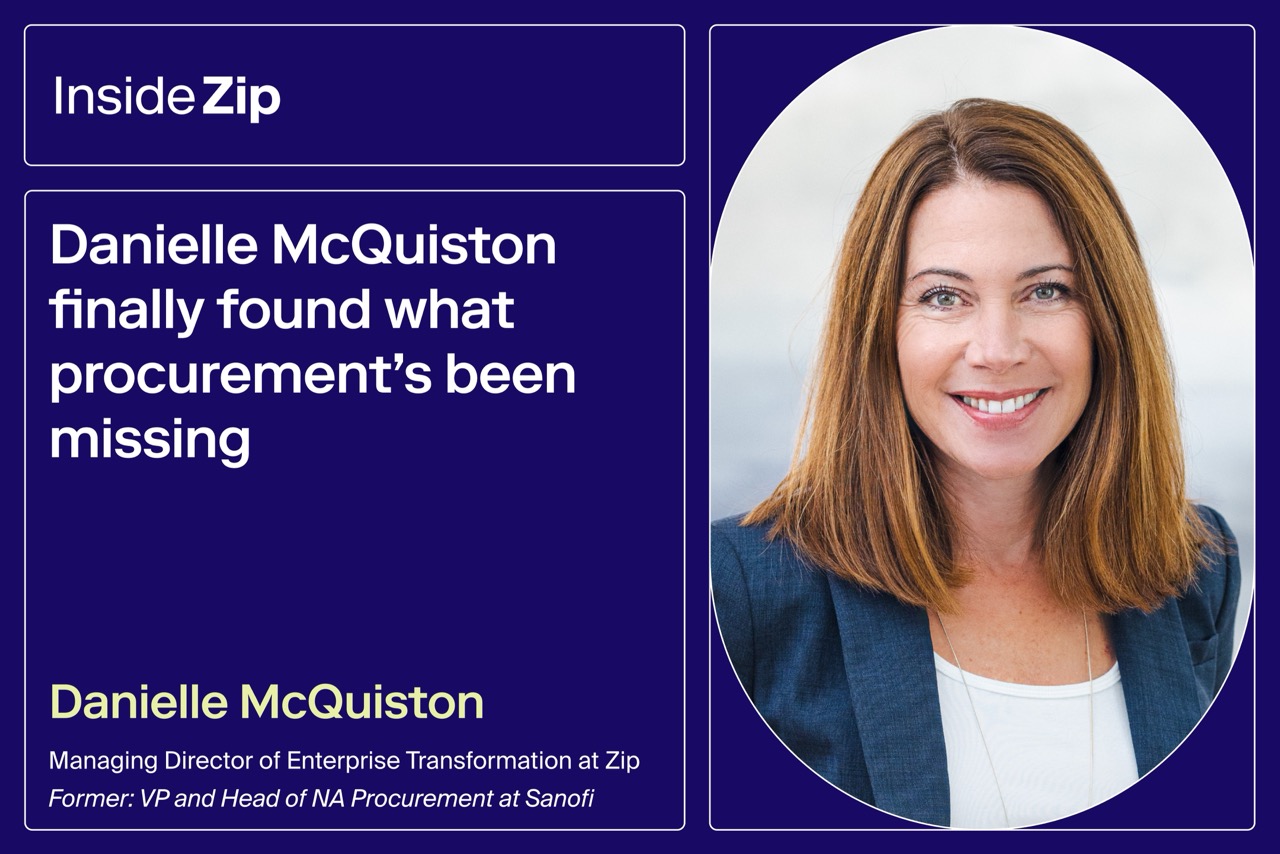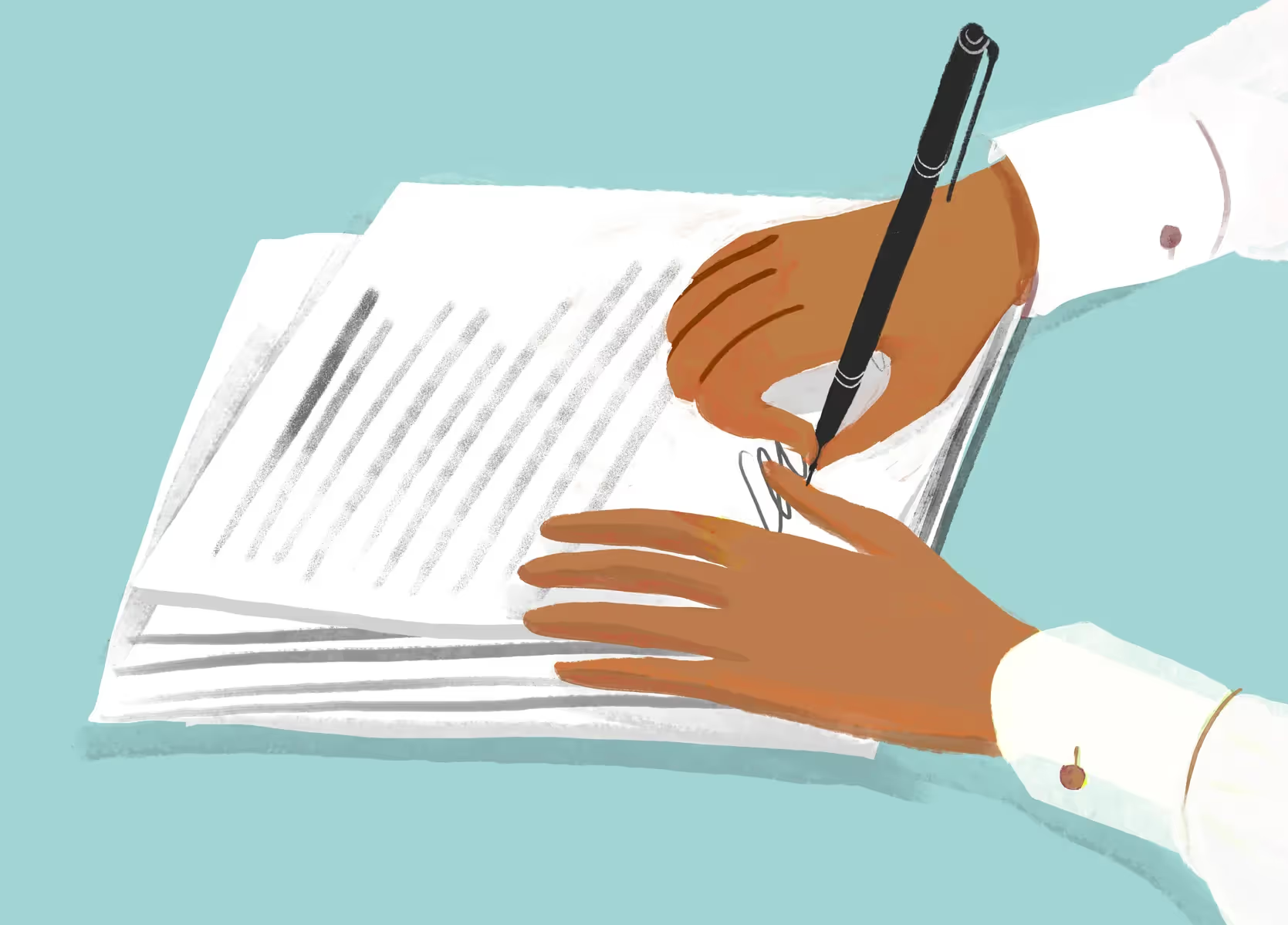
Procurement cycle guide: Stages & best practices explained
Learn tips on how to streamline and standardize procurement.

Managing business spend can be complicated, but it doesn’t have to be.
Modern businesses have evolved a tested-and-true method for ensuring goods and services are considered, sourced, acquired, and paid for in a transparent and measurable way.
This is the procurement cycle—an essential operation embodying the systematic approach to purchasing that businesses need to consider for an efficient and effective acquisition of goods and services.
By the end, you'll grasp the fundamental aspects of the procurement cycle, be able to distinguish between different types of procurement, and learn why this cycle is pivotal for every business, irrespective of scale.
You’ll also find out how solutions like Zip can revolutionize this vital process.
Let’s dive in!
What is a Procurement Cycle?
The procurement cycle—also referred to as ‘the procurement process’—encompasses the entirety of activities involved in the acquisition of goods and services—from initially identifying needs to the final payment, and subsequent record-keeping.
Tailored to align with an organization's unique needs and operational demands, this cycle ensures that resources are acquired in a timely, cost-effective, and compliant manner, setting the foundation for a business's operational efficiency and financial health.
Procurement Cycle guide: 7 steps explained
Each organization’s procurement process may differ, but there are common steps that provide a framework for efficient and effective procurement.
Let’s explore these steps and their significance in the procurement cycle.
Step 1. Define needs
This is where the procurement cycle begins.
Start by accurately identifying exactly which goods or services are required to move forward with your company’s business needs. Before making any purchase request, consider the price, quality, quantity, and cadence required.
This will all inform the later stages of the cycle—without a full understanding of the needs of your departments with a clear list of requirements, you may find yourself stuck in the later stages of this process.
Know what you need, and why you need it. That’s the bottom line.
Step 2. Create a purchase requisition
Once needs are defined, you’ll want to ‘create purchase requisition’. This document serves as a formal request for the needed goods or services and typically includes specifications, quantity, and budget.
The creation of a purchase requisition will help maintain an organized and controlled procurement processes, and ensure that purchases are pre-approved and aligned with the organization's broader needs and policies.
Step 3. Purchase requisition review and approval
The third step involves the review and approval of this purchase requisition. This acts as a checkpoint for budget compliance and need verification, preventing unnecessary or extravagant expenditures.
Approvers will assess the requisition for its necessity, cost-effectiveness, and alignment with organizational goals, providing an additional layer of oversight.
Step 4. Vendor selection
The Vendor selection stage is a pivotal moment during the procurement cycle. Who are you going to work with?
This process involves evaluating and choosing potential suppliers for your needs, based on criteria you hopefully established during Needs Identification—things like the price you’re looking for, the quality you require, and other reliability and service metrics.
For more information about vendor selection and strategic sourcing, check out Zip’s Guide: ‘Sourcing Strategies Beyond the RFP: Tactics to Drive Savings and Win Bids’.
Step 5. Create and approve purchase order (PO)
After selecting a vendor, you’ll need to create and approve a purchase order. The PO formalizes the transaction, outlining the specifics of the order, including quantities, descriptions, prices, and contract terms.
Remember, that the PO serves as a legally binding agreement between the buyer and the supplier, and its approval is essential in order to move forward with the procurement cycle.
Here’s a more detailed guide on accounts payable workflows and automations that can reduce bottlenecks and save your finance team valuable time.
Step 6. Order management
Order management involves overseeing the order's delivery and ensuring that it meets the agreed-upon contract terms.
Maintaining the timeline, quality control, and compliance with the contract is an essential component of the procurement cycle. Effective order management helps in identifying and resolving discrepancies early, ensuring smooth operation and satisfaction on both ends.
Step 7. Invoice review and payment
Once all services items are rendered, the final step in the procurement cycle is the review and payment of the invoice.
The purchasing process ensures that the goods or services received are in line with the order and that the payment terms agreed upon are honored. Timely and accurate payment fosters a good relationship with suppliers and may pay dividends in the future, when you one day perhaps work together again!
Follow up: store and update records
Finally, storing and updating records is an essential step for maintaining transparency and accountability in the procurement process. It involves keeping detailed records of all transactions, contracts, receipts, and communications. This practice not only aids in future audits and compliance checks but also provides valuable data for analyzing and improving the procurement process.
What's the difference Between Direct, Indirect, and Services Procurement?
Understanding the nuances between indirect, direct, and services procurement is important for businesses aiming to optimize their purchasing strategy. Each plays a unique role in the overall strategic procurement landscape, impacting everything from cost management to supplier relationships.
Direct procurement
This refers to the acquisition of goods and materials that are directly incorporated into the products being manufactured. For instance, a smartphone company purchasing microchips or a car manufacturer buying steel.
Direct procurement is closely tied to the company's core business activities and has a direct impact on the production process and the end product's quality. Since these purchases are often large in scale and strategically important, they're typically planned and forecasted with precision, involving long-term supplier relationships.
Indirect procurement
In contrast, indirect procurement involves purchasing goods and services that support a company's operations but are not part of the final product. This can include office supplies, software licenses, or janitorial services.
Although these purchases might seem less critical at first glance, they are essential for day-to-day business operations. Indirect procurement tends to be more unpredictable and varied, requiring a more flexible approach to manage diverse suppliers and spend categories.
Services procurement
This is a subset of indirect procurement but deserves a special mention due to its growing importance. It involves acquiring services rather than goods, such as consulting, legal services, or marketing.
Services procurement poses unique challenges, such as evaluating the quality of service, managing service delivery, and ensuring value for money. It requires a nuanced approach, focusing on supplier capabilities, service level agreements, and ongoing relationship management.
Understanding these distinctions is key for Chief Procurement Officers and procurement teams. It allows for more targeted strategies, effective cost management, and better alignment with the company's overall goals.
Why is the Procurement Cycle important?
The procurement cycle is the backbone of any business's operational and financial health, especially if trends in the market continue.
In 2023, the Hackett Group reported a 10.6% increase in procurement requirements globally, underscoring the need for a well-trained team that knows how to administer procurement processes for operations.
The procurement cycle, when optimized and adhered to, can do more than just help businesses secure the best quality goods and services at the most competitive prices.
It can help build stronger partnerships with suppliers, which can be hugely beneficial for long-term success and supply-chain savings. It can also boost employee productivity by streamlining processes, allowing the team to spend less time on administrative tasks, and more on strategic activities that add measurable value to the business.
By understanding and optimizing the procurement cycle, businesses can position themselves for success in an increasingly competitive and complex business environment.
How do you improve your Procurement Cycle? Best practices and strategy
Improving your procurement cycle is not just about streamlining operations; it's about leveraging data and technology to make informed decisions that drive efficiency and cost savings. Here's how you can enhance your procurement management, supported by industry statistics and insights:
1. Digitize manual processes
In case you haven’t already—it’s time to digitize.
A study from The Hackett Group found that digital transformation can reduce procurement costs by up to 45% and increase efficiency by 30-50%.
Implementing electronic purchase orders and invoices are optimizations that can significantly speed up approvals and payments, streamlining the procurement workflow for all stakeholders involved.
2. Utilize automation
Automation plays a pivotal role in enhancing procurement processes. According to McKinsey, companies that automate their procurement processes can see up to a 3% savings on total spend annually.
Procurement software like Zip automatically generates purchase orders and software for vendor evaluations can free up your team’s time for more strategic decision-making.
3. Standardize your procurement cycle guide
A standardized procurement process ensures consistency and efficiency. Creating a clear guide that outlines each step, from requisition to payment, sets expectations and minimizes confusion.
4. Improve procurement data visibility
Visibility into procurement data is helpful not just for making better decisions, but also informing stakeholders about the status of orders, and if any action needs to be taken.
A centralized AI-powered procurement platform like Zip can also identify spending patterns, evaluate supplier performance, and highlight areas for improvement and cost savings—with real-time insights and alerts.
5. Track actionable KPIs and insights
Identifying and tracking key performance indicators (KPIs) can provide actionable insights into the efficiency and effectiveness of your procurement process.
Metrics such as cost savings, spend under management, and supplier performance can help in assessing the procurement cycle's health and pinpoint areas for improvement. Regularly review these KPIs to ensure that your procurement strategy remains aligned with your broader business goals.
6. Centralize procurement data and documents
A centralized repository for all procurement-related data and documents simplifies access and management, ensuring that all your contracts, purchase orders, supplier information, and performance metrics are all located within a single source of truth.
What are the Top Challenges for the Procurement Cycle?
The procurement cycle, even though it's designed to maximize efficiency in operations, is not without its challenges. Understanding the pain points is important for organizations looking to streamline their procurement processes and improve overall efficiency.
Let’s explore the most common challenges encountered in the procurement cycle.
Manual or outdated processes
One of the primary challenges in procurement is the reliance on manual or outdated processes. Such practices often lead to increased errors, slow down procurement timelines, decrease productivity, and introduce confusion into the process.
For instance, manual data entry is prone to human error, which can result in incorrect orders or financial discrepancies. This inefficiency is compounded by outdated systems that cannot keep pace with the dynamic nature of modern procurement demands. As mentioned earlier, it’s time to digitize.
Lack of procurement visibility
Another significant challenge is the lack of visibility in the procurement process. This can result in missed opportunities for cost savings and negatively impact the overall procurement strategy.
Without a clear view of the entire procurement process, it becomes difficult to identify areas of overspending, negotiate better deals with suppliers, or optimize inventory levels. In addition, purchases can get caught up if key stakeholders aren’t notified that they need to approve or sign off on an activity.
Fortunately, Zip has solved the problem of transparency in approval workflows, but it can still be an issue for companies that have yet to onboard with such an advanced platform.
Poor vendor management
Vendor management is a critical component of the procurement cycle. Challenges arise when there is no centralized and standardized system in place, making it difficult to effectively collaborate with multiple vendors across different categories.
This lack of coordination can lead to complicated communications, inconsistent service levels, and difficulty in managing vendor performance.
Effective vendor management is essential for maintaining strong supplier relationships and ensuring the consistent quality and timely delivery of goods and services.
Maverick spending
Maverick spending refers to unauthorized or unmanaged purchases made outside of established procurement policies.
This type of spend can break protocols, leading to higher costs, uncontrolled expenses, and potentially subpar quality of purchases. Maverick spending undermines the efforts of standardized procurement processes and can have a significant impact on a company’s budget and procurement strategy.
Risk mitigation
Finally, risk mitigation is a complex aspect of procurement that involves aligning procurement activities with an organization’s internal policies and legal requirements.
An unoptimized procurement cycle can hinder the procurement team’s ability to manage compliance effectively and mitigate risks such as supply chain disruptions, regulatory non-compliance, or contractual disputes. Ensuring a robust risk mitigation strategy is essential for a smooth and compliant procurement process.
How can Zip improve your Procurement Cycle?
Addressing the core challenges of the procurement cycle requires innovative solutions that streamline and enhance the process.
Zip offers advanced procurement capabilities designed to optimize the intake process, foster standardization, and elevate user experience—key factors in achieving procurement efficiency.
With Zip's clean UX, organizations can unlock a new level of procurement process efficiency, significantly improving visibility from the point of intake onwards.
This approach not only simplifies the procurement process for employees but also aligns with the strategic goals of cost savings, risk mitigation, and operational scalability.
For a deeper dive into how Zip can transform your procurement cycle, request a demo to see our platform in action.
Don't miss out on the opportunity to lead your organization toward a more efficient, effective, and user-friendly procurement process.

Maximize the ROI of your business spend

Enter your business email to keep reading



























.webp)




















.avif)













.avif)









.webp)





.avif)












.avif)
